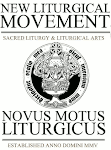Personnel Required
Master of Ceremonies - Thurifer - 2 Acolytes - 2, 4 or 6 Torchbearers.
If there are insufficient servers for there to be 2 Torchbearers, the Acolytes should double as Torchbearers, in this event it will be necessary to make arrangements for the ringing of the bell at the Sanctus, because the Acolytes/Torchbearers will be processing to the sanctuary at that time, and also at the Elevation and Domine non sum dignus.
The Master of Ceremonies could himself deal with this or he could ring the bell for the Sanctus and then place the bell next to where the Torchbearers are to kneel so that one of them could ring it for the other occasions.
The Master of Ceremonies can double as Thurifer if necessary, although it is not to be recommended as it is rather complicated to carry out all the duties of both Thurifer and Master of Ceremonies.

Sacristy
Vestments: amice, alb, girdle stole, maniple, chasuble and biretta for the Celebrant, and cassocks and cottas for the servers.
Candles for Acolytes. 2, 4 or 6 torch candles; if no torch candlesticks are available, use large candles without candlesticks (this is, in fact thte original form of the torch candles). Thurible, incense boat and spoon.
Altar
If the altar is consecrated it should contain relics, if it is unconsecrated, it requires an altar stone to be place on it. The altar should be covered with three linen cloths, the bottom one is of the length of the altar table (mensa), the next hangs slightly over the ends of the altar and the top one hangs down to the base of the altar on either side. Strictly there should be an altar frontal of the same liturgical colour as the vestments, but this practice is little observed these days. On or behind the altar, a large crucifix is required, and 2, 4 or 6 candlesticks with candles; although it is usual to use 6 candles at a Missa Cantata, it is perfectly correct to use only 4 on feast days and Sundays, and to use 2 on ferias. Altar cards are required: the large one in the centre, the Last Gospel card on the left-hand side of the altar (as you look at the altar from the front); the Gospel side, and the card with the Lavabo on it, on the right-hand side; the Epistle side. Missal on Missal-stand set on the altar at the Epistle corner.
 The chalice, prepared as Diagram 1, stands at the centre of the altar on the spread corporal. The burse, leans against a candlestick towards the Gospel side.
The chalice, prepared as Diagram 1, stands at the centre of the altar on the spread corporal. The burse, leans against a candlestick towards the Gospel side.Credence table
Table covered with white, linen cloth. Communion plate. Bell. Wine and water cruets and Lavabo bowl and towel; if there is a piscina, these may be placed there.

Sanctuary
Sedilia (seat) for the Celebrant. Seats for Acolytes and Thurifer near the credence table. There should also be seats in the chancel for other servers. Near the credence table: thurible stand if required. The Thurifer may hold the thurible when it is waiting to be used and leave it in the sacristy when it is not needed, alternatively, he may leave it on the stand next to the credence table.
Before Mass
Light the candles, and light charcoal and place it in the thurible.
____________________________________________________________________
Sundays
If the Asperges is to take place, prepare holy water bucket and sprinkler and book on the altar step. Book for the Prayer for the Sovereign for after Mass. The Ritus Servandus contains both the Asperges and the Prayer for the Sovereign. The chasuble and maniple are laid out on the sedilia. A cope of the same liturgical colour as the other vestments is set out in the sacristy instead of the chasuble. If there is no cope of the correct colour, the Celebrant does not wear a cope, but wears only the stole over his alb for the Asperges.
____________________________________________________________________
General Note: Silence should be observed at all times in the sacristy.







0 comments:
Post a Comment